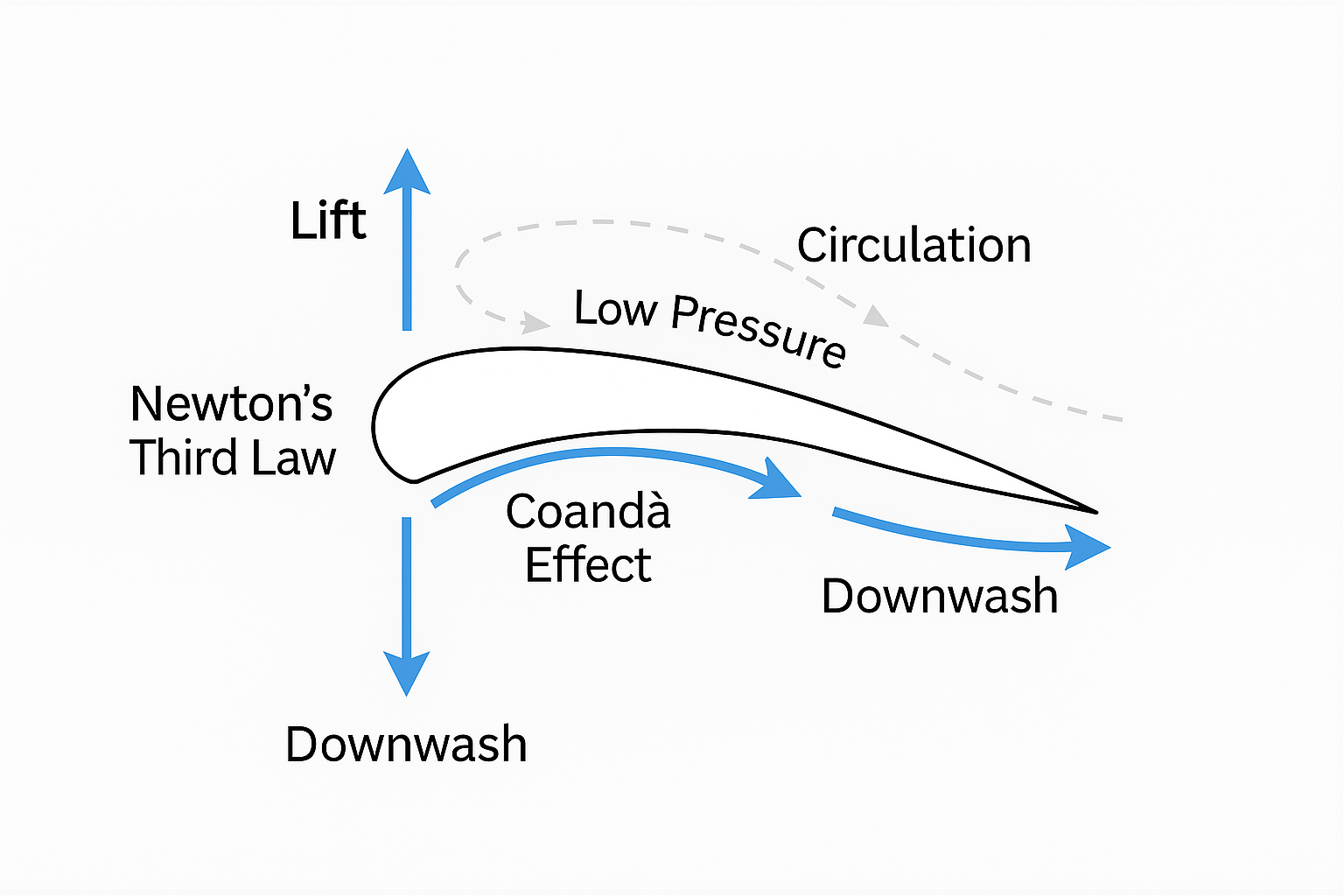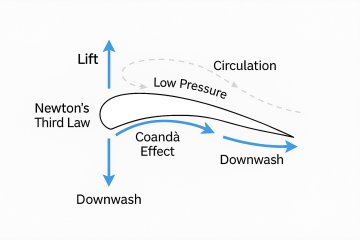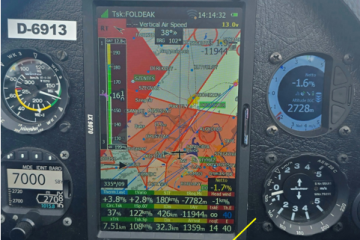
Beyond the Myth: The Real Physics of How Airplanes Fly
Most people learn a simple explanation for flight in school:
“Air moves faster over the top of the wing, so the pressure is lower, and that pushes the wing up.”
This isn’t completely wrong — but it’s not the whole story. In reality, several physical principles combine to generate lift. Let’s separate the myth from reality and explore what really keeps airplanes in the air.
1. Newton’s Third Law: Action and Reaction
One of the most intuitive ways to understand lift is through Newton’s Third Law.
- The wing deflects air downward — creating downwash.
- The air accelerates downward behind the wing.
- For every action, there is an equal and opposite reaction.
👉 If the wing pushes air down, the air pushes the wing up. This is a big part of lift.
2. Bernoulli’s Principle: Pressure Differences
Bernoulli explains why air pressure changes with speed:
- Air over the wing’s top surface speeds up.
- Faster air = lower pressure.
- Below the wing, pressure is higher, so there’s a net upward push.
👉 This measurable pressure difference contributes directly to lift.
3. The Kutta–Zhukovsky Theorem: Circulation
But why does the air move faster on top? That’s where circulation comes in:
- A wing moving through air creates circulation around itself.
- This ensures smooth airflow at the trailing edge (the “Kutta condition”).
- To satisfy this, air over the wing accelerates, causing the pressure drop we see in Bernoulli’s principle.
👉 Circulation provides the deeper “why” behind the faster flow above the wing.
4. The Coandă Effect: Air Sticking to the Wing
Another piece of the puzzle is how air “sticks” to curved surfaces:
- Airflow follows the wing’s curved top surface instead of flying straight off.
- This bending increases downward deflection.
👉 More air pushed downward means more upward lift.
Putting It All Together
So, why do airplanes fly?
- They push air downwards (Newton).
- They create pressure differences (Bernoulli).
- They set up circulation (Kutta–Zhukovsky).
- They guide airflow with their curved shape (Coandă).
Lift is not the result of one principle alone — but of all of these working together. The “faster air on top” explanation is a good starting point, but the real story is much richer.
Quick links:
https://en.wikipedia.org/wiki/Martin_Kutta
https://en.wikipedia.org/wiki/Nikolay_Zhukovsky_(scientist)
https://en.wikipedia.org/wiki/Henri_Coand%C4%83
































